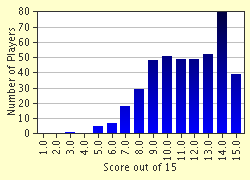Quiz Answer Key and Fun Facts
1. Ankylosaurus was a large (25-35 feet long), heavily armored reptile. Its head, back, and tail were covered with fused plates of bone, and its tail ended in a bony club. Sounds like a real tooth-breaker! Tell me, was this living tank a dinosaur?
2. The long-necked, long-tailed, big-bellied Apatosaurus whiled away many a day under the Jurassic sun eating large amounts of vegetation. Given that it could grow 90 feet long and weigh 30-something tons, I imagine that it did not move that fast. Was Apatosaurus a dinosaur?
3. Coelacanths were thought to have gone extinct at the end of the Mesozoic period, the "age of dinosaurs." When a living coelacanth was discovered in 1938, it was hailed as a "living fossil"-- an animal that has survived virtually unchanged since earlier periods in geologic time. Is the coelacanth a dinosaur?
4. Dimetrodon was a memorable predator from the Permian period. You probably remember it as the one with the large sail across its back, supported by bony spines. Dinosaur?
5. (Scary music.) It came from the depths of the ocean. None of the ammonites knew, until it was too late. That tooth-filled head on the end of the long neck, darting up from below, eating them out of their shells. Yikes! Aieeeeee! Elasmosaurus must have been a nightmare for all sorts of Cretaceous sea critters. But was it a dinosaur?
6. Speaking of sea reptiles, the Ichthyosaurs look very much like modern dolphins, with the exception that the tail swings back and forth horizontally, like a fish, instead of vertically, like a whale or dolphin. Were Ichthyosaurs dinosaurs?
7. Iguanodon was so named because its teeth resembled the teeth of an iguana. It was also one of the longest-lived and most successful reptiles of the Mesozoic period. All right, you know the question by now...
8. One more question about Mesozoic swimming critters, this time, the Mosasaurs. They had great big heads with sharp, pointy teeth, and propelled themselves through the water with their large, flattened tails and flippers. Are Mosasaurs dinosaurs?
9. Pachycephalosaurus, a relatively small bipedal reptile, had an enormously thick skull. In fact, if you're ever having trouble getting your kid to wear a bike helmet, just tell them it makes them look like a Pachycephalosaurus. Hey, it worked for me. Your results may vary. So, Pachycephalosaurus- was it a dinosaur?
10. Parasaurolophus looked something like an Iguanodon, but with no thumb spike and a long projecting tube on the back of its head. Was this animal with funny headgear a dinosaur?
11. Pterosaurs were the group of flying reptiles that lived during the Age of Dinosaurs. Unlike birds and bats, their wings were made from skin stretched between their body, the bones of their arm, and their highly elongated fifth (pinkie) finger! Were Pterosaurs dinosaurs, or not?
12. Stegosaurus is probably best known for the double row of triangular plates running down its back, and not for its intelligence (its brain was the size of a walnut.) Current topics in Stegosaurus research-- Were the plates used for cooling? Defense? Or what? However, I'm only interested in one thing. Was it a dinosaur?
13. Another Mesozoic reptile that was not to be messed with was the Triceratops. It had three long, pointy horns on its face, two above its eyes, one over its nose. Its neck was protected by a bony frill. Was Triceratops a... wait... you can just answer the question...
14. Last but not least, if you had to think of a dinosaur, one dinosaur, THE stereotypical dinosaur, you'd think of Tyrannosaurus rex, right? Is it a dinosaur? Or has somebody been stringing you along all this time? (Just answer "yes" or "no" to whether T. rex is a dinosaur.)
15. Notice how I've been describing most of these "dinosaur or not" candidates as reptiles? That's because all (non-avian) dinosaurs are reptiles, but not all reptiles are dinosaurs. So, for a final question, I'd like to ask, "What are the requirements for an animal to be called a dinosaur?" Since this question has to be multiple choice, which of these characteristics is NOT a defining feature of dinosaurs?
Source: Author
pu2-ke-qi-ri
This quiz was reviewed by FunTrivia editor
crisw before going online.
Any errors found in FunTrivia content are routinely corrected through our feedback system.

